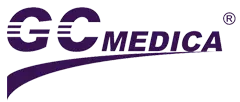-
Laparoscopic & Endoscopic Products
-
Laparoscopic Procedures
- Heated Insufflation Tube
- Laparoscopic Smoke Filter
- High FLow CO2 Laparoscopic Insufflation Filter Tube Set
- Veress Needle
- High Flow Heated Insufflation Tube
- Arthroscopy Irrigation Set
- Disposable Bladeless / Bladed Trocar with Thread / Balloon
- Disposable Wound Protector
- Disposable Height Changeable Wound Protector
- Retrieval Bag
- Laparoscopic Suction Irrigation Set
- Laparoscopic Insufflator
- Endoscopy Care and Accessories
-
Laparoscopic Procedures
- Respiratory & Anesthesia
- Cardiothoracic Surgery
- Gynaecology
-
Urology
- CathVantage™ Portable Hydrophilic Intermittent Catheter
-
Cysto/Bladder Irrigation Set
- M-easy Bladder Irrigation Set
- B-cylind Bladder Irrigation Set
- S-tur Bladder Irrigation Set
- S-uni Bladder Irrigation Set
- B-uro Bladder Irrigation Set
- Premi Bladder Irrigation Set
- J-pump Bladder Irrigation Set
- J-tur Bladder Irrigation Set
- H-pump Bladder Irrigation Set
- Sup-flow Bladder Irrigation Set
- Maple Irrigation Set
- Peony Irrigation Set
- Nelaton Catheter
- Urinary Drainage Bag
- Urinary Drainage Leg Bag
- Enema Kits
- Sitz Bath Kits
- Click Seal Specimen Container
- Silicone Male Catheter
- Spigot Catheter and Adaptor
- Sandalwood Irrigation Set
- Freesia Irrigation Set
- Daffodil Irrigation Set
- Single-Use Digital Flexible Ureteroscope
- Enteral Feeding Products
- Dental
- Fluid Management
- Warming Unit and Warming Blanket
-
Operating Room Necessities
- Nasal and Oral Sucker
- Disposable Medical Equipment Covers
- Magnetic Drape / Magnetic Instrument Mat
- Suction Handle
-
General Surgery
- Perfusion Atomizer System
- Gastric Sump Tube
- Surgical Hand Immobilizer / Lead Hand for Surgery
- Administration Set for Blood
- Ear/Ulcer Syringe
- Bulb Irrigation Syringe
- Toomey Irrigation Syringe
- Mixing Cannula
- Basin Liner/Basin Drape
- Medical Brush
- Sponge Stick
- Suture Retriever
- Needle Counter
- Disposable Calibration Tube
- Heparin Cap
- 100ML Bulb Irrigation Syringe
- Scleral Marker
- Surgical Light Handle
- Mucosal Atomization Device
- Durable Medical Equipment
- Patient Handling System
- PVC-FREE Medical Device
- Emergency
-
Patient Air Transfer Mattress Online WholesaleDec 17 , 2024
-
Cystoscopy Irrigation Set Online Wholesale | GCMEDICADec 17 , 2024
-
Patient Warming Device and Blanket Online wholesaleDec 16 , 2024
-
CathVantage™ Twist Intermittent Catheter | GCMEDICASep 20 , 2024
-
Single-Use Digital Flexible Ureteroscope | GCMEDICASep 20 , 2024
Nursing Methods of Nasoenteral Feeding Tube
Nasoenteral feeding tube is a kind of medical apparatus and instruments, its key raw material is X-ray opaque polyurethane material tube. It is mainly to assist the gastrointestinal peristalsis. When everything is normal from human to gastrointestinal motility, the nasoenteral feeding tube can immediately show some nutrients in the body with the assistance of electronic endoscopes, which will reduce the increase of internal bacteria or the migration of parts. In addition, it can keep the stomach and intestines from being damaged. Then, how to maintain it after each application of the nasoenteral feeding tube?
1. Maintain oral cavity hygiene and do the oral cavity care twice a day. In order to avoid aspiration, please raise the bedroom bed by 30-45 degrees, use a special nutrient component pump to instill and immediately eliminate oral secretions to maintain oral cavity hygiene.
2. Before each infusion of nutrient solution, please check the outside length of the nasoenteral feeding tube to avoid its dislocation. And please check the gastric retention. The test method: it can absorb the stomach contents. If there is 100ml of stomach contents in the stomach 2 hours after the last feeding or about 50% of the feeding stuff remains in the stomach after 1 hour with gastric retention. Please immediately stop adding the nutrient solution, and change the feeding method according to the situation.
3. At least 20Ml sterile water or warm water should be used to clean the tube before and after each application to check whether it is smooth or not. For patients who are given continuous enteral nutrition, the tube should be flushed every 6 to 8 hours. Increase the flushing frequency as much as possible for the thicker nutrient solution.
4. For patients who need to intake oral drugs through the nasoenteral feeding tube, the specific method: firstly, separate the medicine, mash, fully melt, and dilute the liquid, then stop the enteral nutrition pump, clean the nasoenteral feeding tube with 20Ml warm water and introduce the melted medicine into the nasoenteral feeding tube. After introducing the medicine, clean the nasoenteral feeding tube again with 20Ml warm water, turn on the enteral nutrition pump and record the consumption of medicine and water in the nursing list.
5. Strictly observe whether the patient has abdominal pain, abdominal distension, diarrhea and other conditions and pay attention to the amount, color, quality of defecation.
6. Observe the treatment effect and record the 24-hour intake and output. According to doctor's instructions, regularly check electrolyte solution, liver and kidney function, blood sugar and blood sugar level and do urine routine inspection.
7. Please be sure to use special enteral nutrient solution for feeding, such as hospital nutrition diet, TPF, etc. It is strictly forbidden to use the nutrient solution made by relatives to remove the blockage of the tube.

